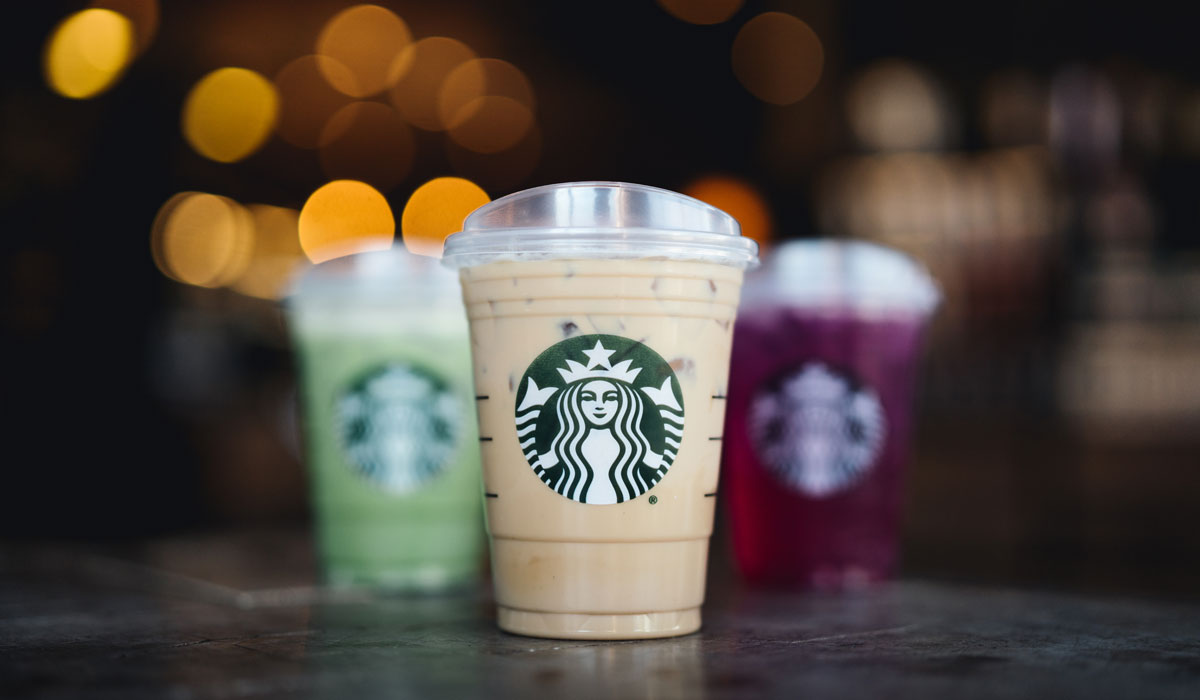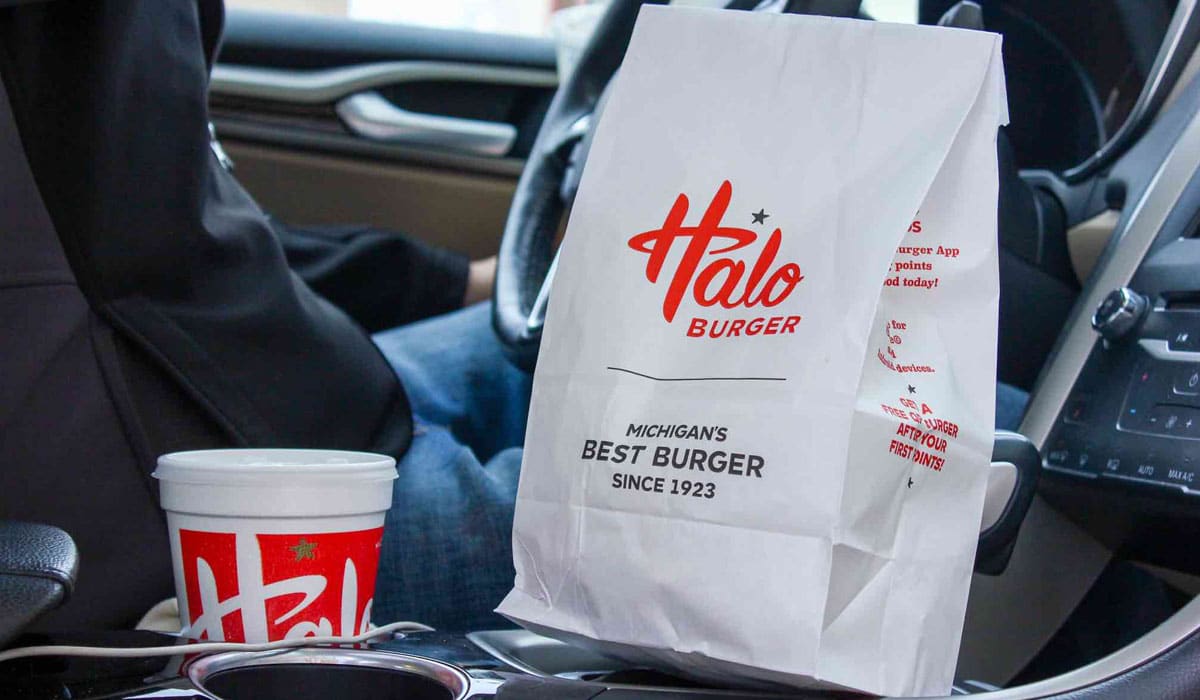As coronavirus concerns heighten, a natural step for quick-service chains appears to be limiting contact. Whether that’s funneling resources into delivery, curbside take-out, or drive thru, consider it an urgent, reactionary way to meet today’s consumer where they want to be.
For some brands, taking the notion a step further might be unavoidable, too. Eight-unit Halo Burger announced Friday it planned to close all dining areas Saturday until further notice. It’s not shuttering entire restaurants, however. The classic brand, founded 1923 in Flint, Michigan, intends to operate drive thru and delivery business only. Employees will remain scheduled as normal to accommodate increased drive-thru demand, the company said.
“Our team has been closely monitoring the coronavirus and the recommendations from public health and safety officials,” David Walters, co-owner of Halo Burger, said in a statement. “Today, we made the decision to close our dining rooms in order to practice social distancing to minimize the spread of the virus. Our team has already implemented numerous measures to guarantee our dining facilities are safe and this is another step to ensure we uphold that promise.”
The move came a day after Halo Burger issued a statement outlining the measures it’s taking to mitigate the spread of coronavirus. That includes increased daily cleaning efforts focused on high-traffic areas, like restrooms, checkout counters, dining tables and door handles. Halo Burger also said it’s encouraging those who feel sick to stay home and recover, and sharing information with employees about how to keep themselves safe, as well as closing playscapes and working alongside local, regional, and national partners.
Halo Burger is owned by Halo Country LLC, a company directed by entrepreneur Chance Richie, who purchased the legacy chain in 2016 when there were 15 stores.
Originally called Kewpee Hotel Hamburgs, the brand had more than 400 units across the Midwest by World War II. It was renamed Halo Burger in 1967 by William V. Thomas, a franchisee who ran the original Flint store since 1942, and his son, Terry. Terry Thomas sold the brand in 2010 to Dortch Enterprises when there were nine locations. The company added six over the next five years before putting the brand on the market.

The notion of shutting dining rooms amid coronavirus concerns is something we probably haven’t seen the last of.
(UPDATE: Starbucks shuts down all seating)
Starbucks CEO Kevin Johnson wrote a letter to customers March 11 saying “we may adapt the store experience by limiting seating to improve social distancing, enable mobile order-only scenarios for pickup via the Starbucks App or delivery via Uber Eats, or in some case only the Drive Thru will be open.”
He added Starbucks would only close stores “as a last resort,” if the company felt it was in the best interest of employees and customers, or if prompted by government authorities.
“In any such situation,” he said, “we expect store disruption to be temporary.”
One thing Starbucks has in its corner is experience. Johnson said the java chain gleaned insights from dealing with the coronavirus in China. The company announced earlier in the week more than half of its 4,300 locations shuttered, a move that impacted 58,000 employees. Sales were down 78 percent year-over-year.
In Q2, the company expects a 50-percent drop in same-store sales, compared to a projected 3-percent growth before the outbreak. In addition, the chain is bracing for a $400 million to $430 million decline in revenue compared to previous projections.
But now, more than 90 percent of stores are open, with heightened safety protocols such as limited lobby service, minimal café seating, emphasis on contactless service via pickup and delivery, and temperature checks for customers and employees. Many units are operating with reduced hours and some offer delivery only.
Starbucks said 95 percent of China stores should be open by the end of Q2. And, in the last week of February, transactions climbed 6 percent and weekly gross sales hiked 80 percent as units turned the lights back on. Mobile orders attributed to 80 percent of sales mix at month’s end, split 30 percent pickup and 50 percent delivery.
In other terms, Starbucks has a blueprint.
“It is our intent to remain transparent,” Johnson said. “Starbucks resilience is owed to our unwavering Mission to inspire and nurture the human spirit—one person, one cup and one neighborhood at a time.”
Starbucks directed employees to sanitize high-touch areas at the front and back of the store regularly—ideally every eight minutes, but no more than 30. Employees are also mandated to wash their hands every 30 minutes with soap and warm water for 20 seconds or more. The company added labor for cleaning and suspended the use customers’ personal cups in-store. Guests get a 10-cent discount for bringing in reusable cups, but are still given a new one. Starbucks extended that Monday to include cambros, as well as guidance on the use of gloves; how to order extra hand sanitizer; and how to bet grind whole bean coffee that customers bring in.
The company added its China experience provided key insights into what employees might need. In addition to existing benefits, such as sick pay and personal time off, Starbucks extended “catastrophe pay” this week to any employee who has been diagnosed with or exposed to COVID-19 or comes in close prolonged contact with someone in their store or household who has.
It’s also available to employees who experience symptoms, even if they haven’t been in known contact with someone infected, and to anybody who may need to take extra precautions, like employees 60 years of age or older, or people with underlying health conditions. The full catastrophe pay benefit is for 14 days, but if employees are still unable to return to work, additional pay replacement may be made up to 26 weeks.
Additionally, Starbucks is part of a COVID-19 Response Fund in Seattle, where its foundation donated $250,000.






